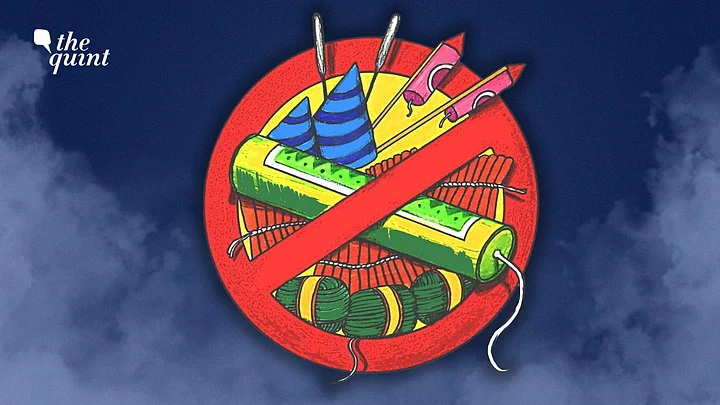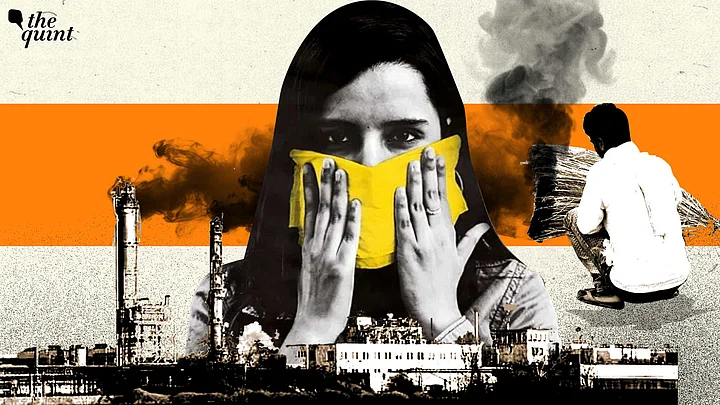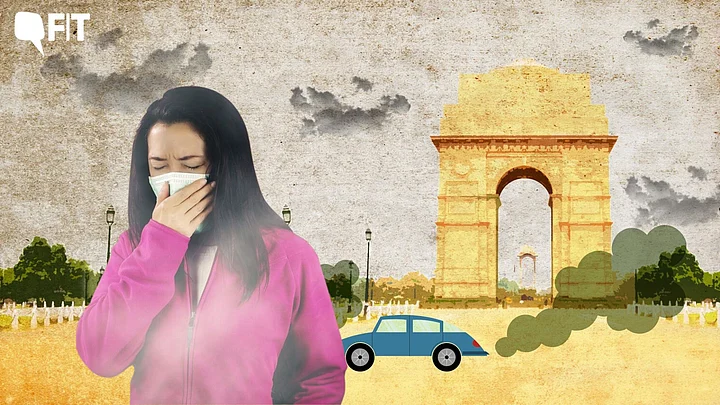The vexed issue of permanently banning firecrackers has yet again come up before the Supreme Court.
On Monday, 11 November, the case was listed in the apex court, where the Delhi government expressed a desire to consult all stakeholders concerned before issuing an opinion on the feasibility of a 'perpetual ban' on fireworks.
After the city's air quality plunged to severely toxic levels post Diwali, the Supreme Court had first proposed a permanent ban on firecrackers.
"The right to live in a pollution-free atmosphere is a fundamental right of every citizen which is protected by Article 21 of the Constitution of India. We are of the view that no religion encourages any activity which creates pollution. If firecrackers are burnt in this fashion, it also affects the fundamental right to health of the citizens," the Supreme Court bench noted during the hearing on Monday.
Days before this observation, between 28 October and 31 October, the PM2.5 pollutant level in Delhi's air was already dangerously high despite a notification by the Delhi Pollution Control Committee (DPCC) imposing a complete ban on manufacturing, storage, and selling (including delivery through online marketing platforms) of all types of firecrackers in Delhi till January 2025.
Evidently, this series of events raises questions about the effectiveness of imposing such bans without a will on the part of implementing authorities to enforce the court’s directions.
Previous Attempts at Regulating Firecrackers
The Supreme Court has been grappling with the issue of firecracker bans and regulation of firecrackers for years now.
In 2015, a writ petition was filed on behalf of three infants before the Supreme Court seeking, among other things, a ban on firecrackers before the onset of Diwali in Delhi. This case led to a series of significant orders passed by the court.
Initially, in 2016, the Supreme Court directed the Centre to “suspend all such licences as permit sale of fireworks, wholesale and retail, within the territory of NCR”.
The court also made it clear that the suspension would remain in force till further orders of the court, and no such licences would be granted or renewed without their permission.
In September 2017, this suspension was lifted. However, the Supreme Court, taking an incremental approach, directed the reduction of grant of temporary licences by 50 percent in Delhi-NCR. The court also put permanent licensees on notice, directing a gradual reduction in the quantity of crackers permitted to be sold.
A slew of other directions were issued in a detailed judgment, including those regarding compliance with the Explosives Rules, 2008, and noise-related issues, such as the prohibition of fireworks in silence zones (areas at least 100 meters around hospitals, nursing homes, educational institutions, etc.).
The court also directed that a research study to assess the impact of bursting fireworks during Dussehra and Diwali on the health of the people was needed. It appointed a committee of experts to look into it (which eventually submitted a report).
Have These Bans and Restrictions Ever Worked?
In a 2018 order, the court, based on a Central Pollution Control Board (CPCB) report, observed that the bursting of firecrackers has a decided impact on pollution levels during Diwali, which puts the health of the residents in danger.
In this order, the court strove to strike a balance between what it saw as “two competing interests” (health and the livelihood of certain stakeholders, i.e. those involved in the manufacture and sale of crackers).
The court also directed that only “green crackers” and crackers with reduced emission (improved crackers) would be permitted to be manufactured and sold. The production and sale of crackers other than these green or improved crackers was banned.
The manufacture, sale, and use of joined firecrackers (series crackers known colloquially as ‘laris’) was banned.
The use of barium salts in fireworks was also banned. The court also issued directions to the Petroleum and Explosives Safety Organisation (PESO) to review the clinical composition of fireworks, particularly with respect to reducing aluminum content.
Three years later, in 2021, the Supreme Court acknowledged that ‘despite the various directions issued by this court… there is a blatant violation of various directions issued by this court’, and that ‘implementing agencies of the states concerned either lack desire to implement the directions …or they close their eyes for whatever reasons’.
The court again directed states/union territories to see that the directions issued by the court are strictly complied with.
However, despite all these years of restrictions, the use of firecrackers has not decreased, nor have the pollution levels in the city shown any significant improvement.
In the case of Delhi, one of the main challenges, however, is the prevalence of other major sources of pollution, such as crop burning, vehicular emissions, and construction activity. Hence, no one is under the illusion that banning firecrackers alone will solve the problem, but the push to do so stems from the desire to reduce the negative impact they have on the overall pollution levels, especially during the festive season.
A look at the Supreme Court's orders (and the regulatory framework discussed by them) shows that even with comprehensive directions in place, a cracker ban, and directions curtailing the use and sale of crackers, would not be effective without the involvement of implementing agencies and active political and executive will.
' Laws Hinge on Effective Implementation'
Section 31A of the Air (Prevention and Control of Pollution) Act, 1981 gives the pollution control board the power to issue directions to ‘any person, officer, or authority’ who will be bound to comply with the directions. The DPCC’s temporary ban this year on the manufacturing, storage, and selling of firecrackers in the NCT of Delhi was passed under this provision.
The Air Act also contains punitive measures for a failure to comply with the directions issued under Section 31A. Similarly, the Explosives Act provides for punitive measures for the contravention of licence conditions and the rules framed under it. There are also expert organisations like PESO which were mandated by the court to review the chemical composition of crackers.
It is obvious that there is no dearth of powers vested with authorities to regulate the sale, use, and misuse of fireworks.
Hence, a proposed perpetual cracker ban is appealing at first blush, but one wonders at its feasibility where so many graded interventions have failed.
How Feasible Will a Perpetual Ban Be?
A perpetual ban raises the specter of an unimplementable court order. Sheer numbers don’t bode well for a perpetual ban.
Questions would also arise on the feasibility of a round-the-year ban, given the resources that would need to be allocated for enforcing it.
A look at the history of the use of a continuing mandamus by the court shows that the most realistic way for change, is dogged and persistent incrementalism with three prongs:
Ensuring better chemical composition of fireworks
Complete crackdown on certain kinds of crackers
Regulating quantities sold
The court and the executive’s interventions should be in place before times of high cracker use – and these interventions should not take on a belated or reactive character.
In the hearing on 11 November, the court asked the Delhi government why this season’s ban was put in place as late as 14 October, by when people may already have acquired their stock of firecrackers.
Proactive use and publicity being given to interventions such as the emergency helpline meant for reporting misuse or violations can also be an excellent tool for ensuring compliance. The Supreme Court, too, seems to value awareness building measures as an important tool as evidenced in its orders.
Meanwhile, courts and stakeholders cannot also be oblivious to the fact that bans on crackers have become a polarising issue that needs to be engaged with. The cultural use of fireworks can be a difficult habit to change, and a ban can produce emotive reactions. The role of community outreach and awareness building becomes important if we want to see a better response from people on celebrating cultural events in a non-polluting way that respects the rights of those who are old, infirm, or otherwise vulnerable to the effects of acute pollution and noise.
(Srishti Agnihotri and Sanjana Thomas are lawyers practicing in the Supreme Court of India. This is an opinion piece and the views expressed above are the author’s own. The Quint neither endorses nor is responsible for the same.)
(At The Quint, we question everything. Play an active role in shaping our journalism by becoming a member today.)





